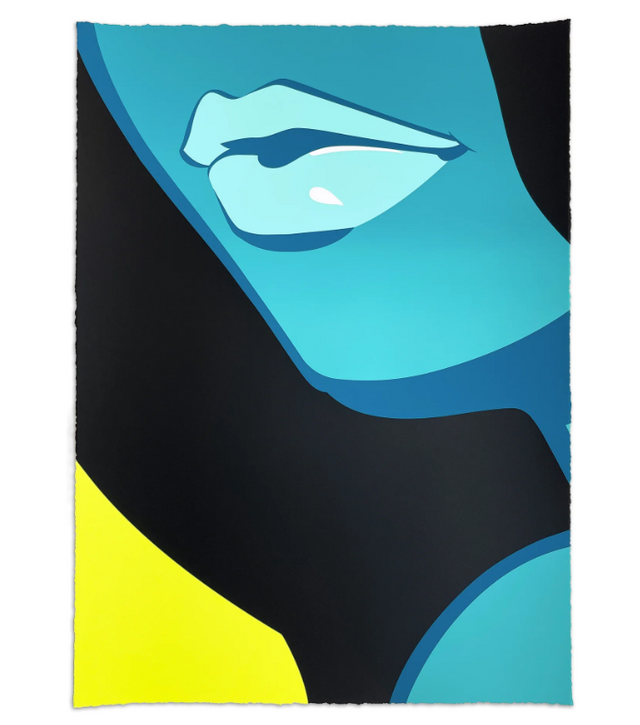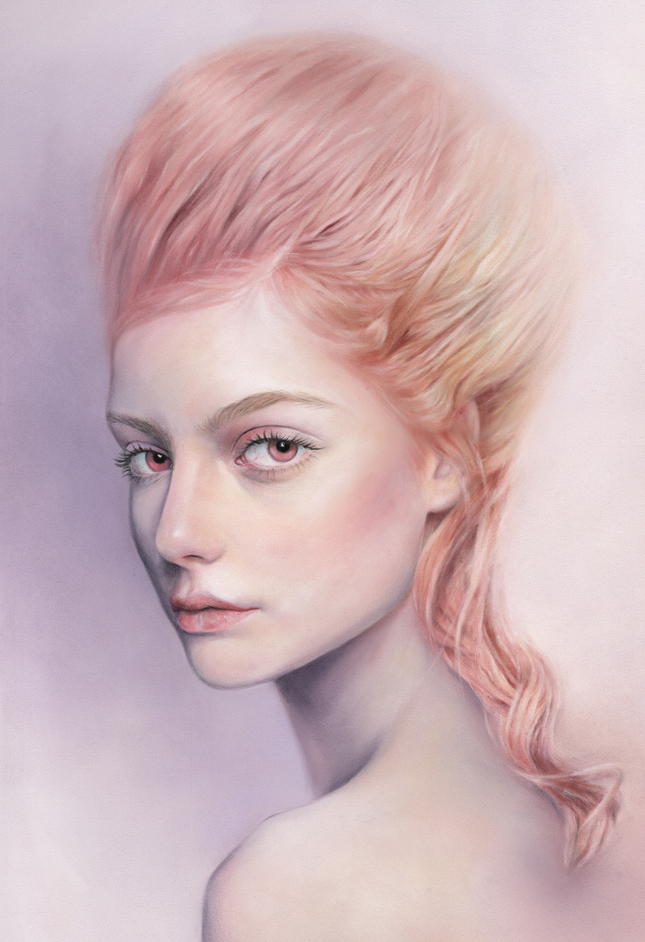
Hair

Bec Winnel Bonnie Giclee Print by Bec Winnel
Bonnie Giclee Print by Bec Winnel Artwork Limited Edition Print on Fine Art Paper Graffiti Pop Street Artist. 2014 Signed & Numbered Limited Edition of 25 Artwork Size 10.75x16.5 Pink Haired Woman Close Up in Repose. Bonnie: A Tranquil Portrait by Bec Winnel The limited edition "Bonnie" giclee print by Australian artist Bec Winnel is an exquisite addition to the world of Street Pop Art and Graffiti Artwork despite its seemingly contrasting, serene, and delicate presentation. Released in 2014, this collection was limited to 25 signed and numbered editions, featuring a white-haired woman in a size of 10.75x16.5 inches. The artwork represents a departure from the traditional urban and vibrant settings of street art, inviting viewers to a moment of calm and introspection. Artistic Expression Beyond Urban Canvases Winnel's "Bonnie" brings the spirit of Street Pop Art into the realm of fine art paper, providing a more intimate and detailed look into the subject matter than what is usually afforded by the broad strokes of graffiti. The intricate details in the woman's white hair and the subtle interplay of light and shadow on her features display Winnel's use of pencil and pastel to create textures and depths as impactful as any large-scale mural. In "Bonnie," the subject's gaze is not confrontational but inviting, reflecting an inner peace and stillness that is often sought but not frequently depicted in street art's bustling, dynamic world. Like much of Street Pop Art, this piece communicates powerful emotions and narratives without words, proving that art can connect with the viewer on multiple levels, regardless of the setting or style. Street Pop Art in the Lens of Giclee Printing The use of giclee printing in "Bonnie" ensures that the nuanced gradations of color and delicate line work are preserved, mirroring the precision that can be found in street artists' spray paint and stencils. Giclee prints, known for their high fidelity to the original artworks, allow the intricate details of Winnel's technique to be fully experienced. This method of reproduction aligns with the ethos of Street Pop Art by making high-quality art accessible and by breaking down the barriers between the public and the private in the world of art. Winnel's decision to limit "Bonnie" to a series of 25 ensures that each piece remains unique and valued, much like the ephemeral nature of street art, which may only exist in its original location for a brief moment before being painted over or removed. The owners of "Bonnie" thus become custodians of a moment in time, a piece of art that captures the transient beauty of life. The Enduring Appeal of Winnel's "Bonnie" The enduring appeal of "Bonnie" lies in its timeless quality and the universal emotions it evokes. This piece by Bec Winnel is a testament to the breadth and diversity of Street Pop Art and Graffiti Artwork. This genre is not limited to loud messages and bold visuals but also encompasses the quiet and contemplative. Winnel's work invites us to see the potential of street art to transcend its traditional boundaries and to be appreciated in diverse contexts and formats. As "Bonnie" graces the walls of private collections, it continues to speak volumes about the power of Street Pop Art to adapt and find resonance in various environments. It bridges the often misunderstood world of street art and those who seek to find beauty and meaning in every form of artistic expression. Through works like "Bonnie," Bec Winnel contributes to the rich and evolving dialogue of what it means to create art in the modern world, ensuring that the narrative of Street Pop Art is as varied and profound as the human experience itself.
$225.00


